 How To Ensure Your Property’S Ventilation Meets Part F Standards To Prevent Damp
How To Ensure Your Property’S Ventilation Meets Part F Standards To Prevent Damp
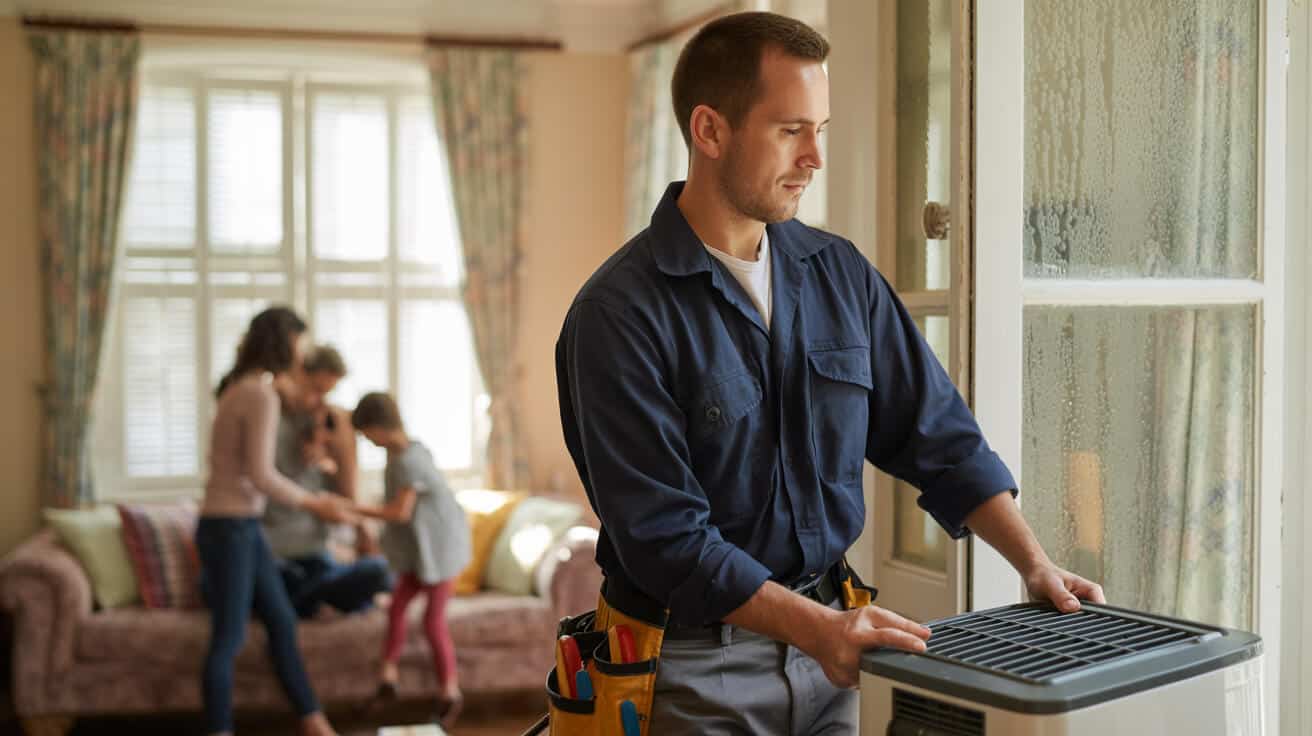
Why Is Part F Compliance the Overlooked Shield Against Damp and Property Decay?
Property owners and managers often invest heavily in double glazing, insulation upgrades, and energy-saving tweaks—convinced these measures alone will future-proof their buildings. Yet the missing ingredient is usually invisible: compliant ventilation that matches airtight construction. Part F of the Building Regulations is not “just more paperwork”—it’s the code-backed barrier standing between your property and the relentless advance of damp, mould, and decay.
“Damp doesn’t appear overnight. It accumulates quietly—when airflow standards slip.”
Part F sets minimum requirements for extraction and airflow, ensuring all habitable UK buildings remain healthy and safe. This goes far beyond the basics: it tells you how much fresh air must enter every room, specifies mandatory extraction rates for kitchens and baths, and now demands measured proof—not just the right-looking gadgets. Local authorities are tightening enforcement as claims over indoor air quality, damp damage, and tenant health accelerate (UK Parliament, 2022). Failing to meet Part F is no longer a minor oversight; it exposes property owners to risk, complaints, and loss of reputation.
The reality is straightforward: energy upgrades that increase air-tightness make Part F more important, not less. Without code-compliant ventilation, your home or rental becomes a breeding ground for hidden moisture and future claims. Compliance transforms “upgrades” into resilience—protecting both property value and your reputation.
Sealing in Trouble: How Modern Upgrades Lead to Damp Risks
As materials improve, unintended consequences multiply. Installing new windows, insulation, or doors often eliminates helpful draughts—leaving behind trapped moisture from daily life: breathing, showers, cooking, or even drying clothes. Part F exists so modernisation doesn’t accidentally trade one problem for another—a new risk for each shortcut taken with airflow.
You are responsible for meeting not just the letter, but the spirit of Part F. Skipping steps now hands you costly repairs, rental voids, complaints, and even legal disputes later.
“Airtight upgrades without airflow double the risk of unseen decay.”
How Can You Be Sure Your Property’s Ventilation Is Really Part F Compliant?
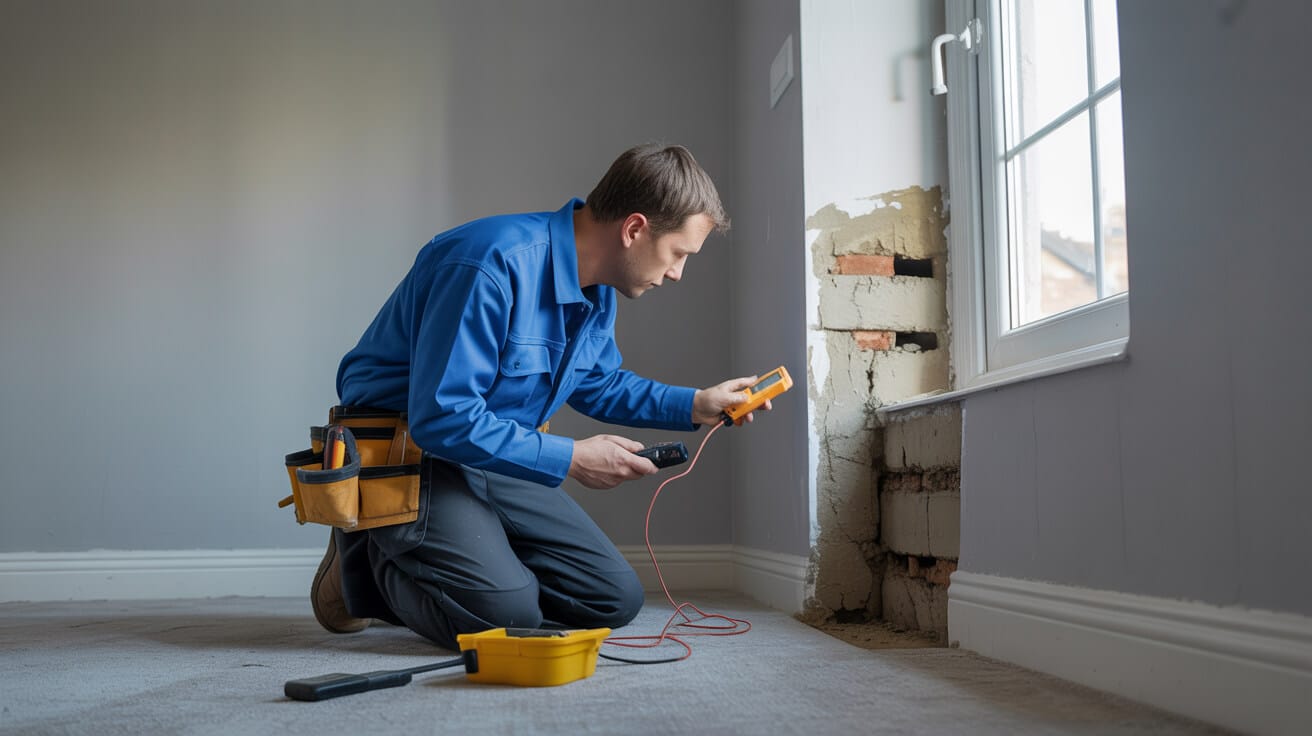
Don’t assume your building “seems fine” just because nobody is complaining—true compliance requires visible, functional systems, tested volumes, and current documentation. A ‘quick fix’ fan or guesswork on window trickle-vents isn’t enough. Every property must be able to prove it meets flow rates under real-world use, regardless of age or prior improvement history.
“If mirrors steam and odours linger, airflow is failing—long before the first black spot appears.”
Conduct a Methodical Room-by-Room Audit
- Bedrooms and lounges: Every habitable room needs effective, undamaged, and adjustable trickle vents or air bricks. Check for furniture or paint blocking vents.
- Kitchens and wetrooms: Only dedicated fans with sufficient extraction count. Shared fans, unvented recirculating hoods, or windows-as-extract do not qualify.
- Utility spaces/loos: Minimum volume fans are essential; even if a window is present, you must meet extraction standards.
- Ensure nothing is blocked, painted shut, or disabled by occupants—survey each area, don’t assume.
Test, Don’t Guess: What Minimum Flow Means
To meet Part F, specific airflow volumes are now prescribed and expected to be measured:
| Location | Intermittent Extract (L/sec) | Continuous Extract (L/sec) |
|---|---|---|
| Bathroom | 15 | 8 |
| Kitchen | 30 at hob/60 total | 13 |
| Utility/Toilet | 6 | 6 |
(Source: DCLG, 2022)
Installers and maintenance crews now use anemometers to verify system performance; many local councils and letting agents demand up-to-date airflow certificates—not manufacturer spec sheets. Particularly after upgrades, you must show test results within the last year.
Spot Risks Early: Subtle Signs of Failure
Persistent steam, musty odours, or new occupant health complaints? These are compliance warning lights. Other tell-tale symptoms include:
- Small black or white specks on sills or corners
- Peeling paint or bubbling wallpaper near windows
- Swelling wood frames or sills
- Windows that fog up hours after the kettle’s cold
These precede catastrophic damp, allowing cost-effective intervention if caught promptly.
Build Your Compliance Armoury: Documentation
- Certificates for every installed extractor, tested and commissioned to Part F
- Dated airflow log or test report—especially after upgrades or new lettings
- Photographic evidence and floor-plan mapping of all vents
- Maintenance and cleaning records for extractors
For landlords, missing paperwork can stall a letting or put you on the hook with insurers or the council. Homeowners need records for sale, dispute, or future value retention.
What Are the Less-Obvious Signs That Your Property’s Ventilation Is Falling Short?
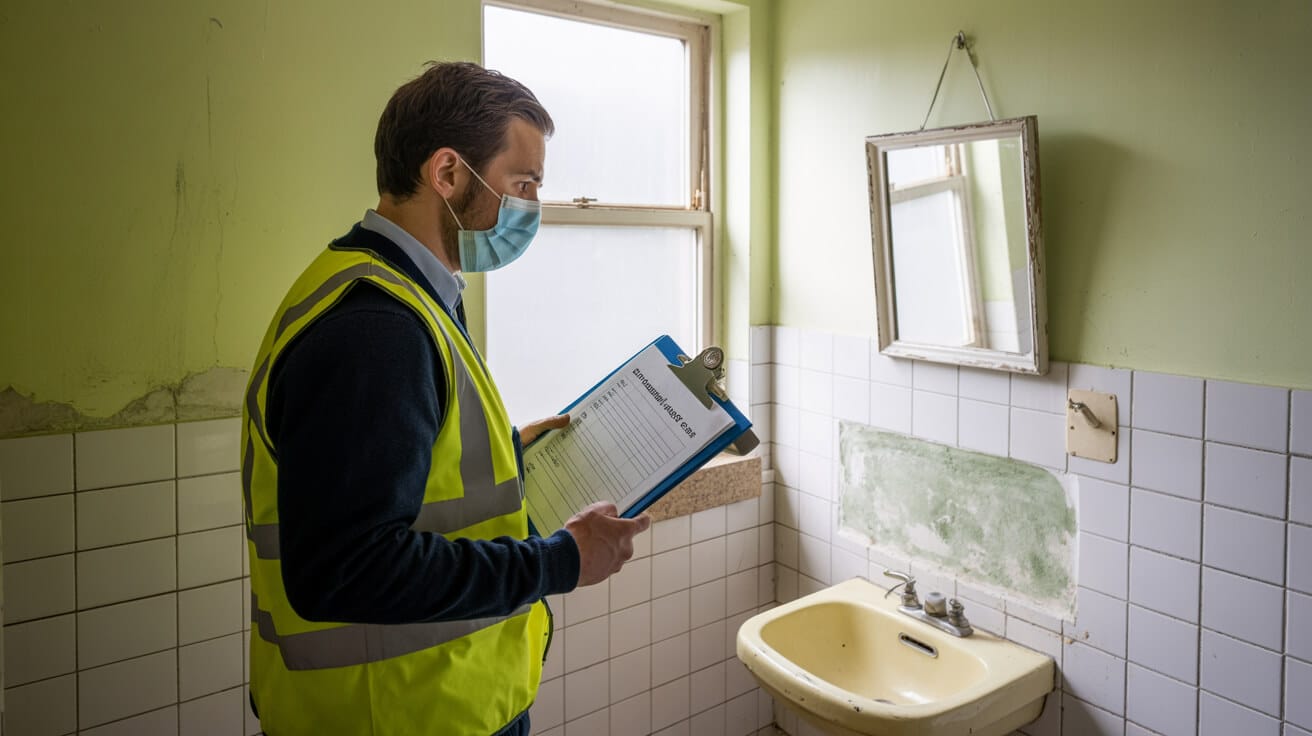
Even well-maintained properties can betray subtle deficiencies in air movement—dismissing these signs risks months of building damage or even a failed compliance inspection. Habitual condensation, rooms feeling “heavy” regardless of how often you air them, or mysterious musty smells: these are not quirks—they’re early evidence Part F is being missed.
“By the time you see visible mould, ventilation failures have been silently at work for months.”
Flagging Issues That Hide in Plain Sight
- Condensation: persisting after the sun comes up—not just on the coldest days, but even in milder seasons
- Isolated mould: at wall or ceiling edges, or behind furniture pushed tight to walls
- Peeling paint: , warping wood, or swollen sills—without evidence of an actual water leak
- Stale, airless rooms: , particularly if energy upgrades have made the property more airtight
When insulation goes in but ventilation is overlooked, even older properties begin to display symptoms once typical of modern “sealed-box” builds. If complaints of “stuffy” rooms or headaches increase after upgrades, airflow is usually the missing link.
“Condensation on the inside of double glazing almost always signals ventilation faults, not window failure.”
Damp Creep vs. Cause: Reading the Signs Properly
Recognise the difference between rising damp (often seen as a steady tide-mark climbing the wall), leak-induced patching, and condensation-based damage. The last is almost always the preventable result of poor air renewal—addressing the cause (ventilation) is as important as patching the symptom.
Which Ventilation Upgrades Actually Deliver Part F Compliance—and Future-Proof Your Asset?
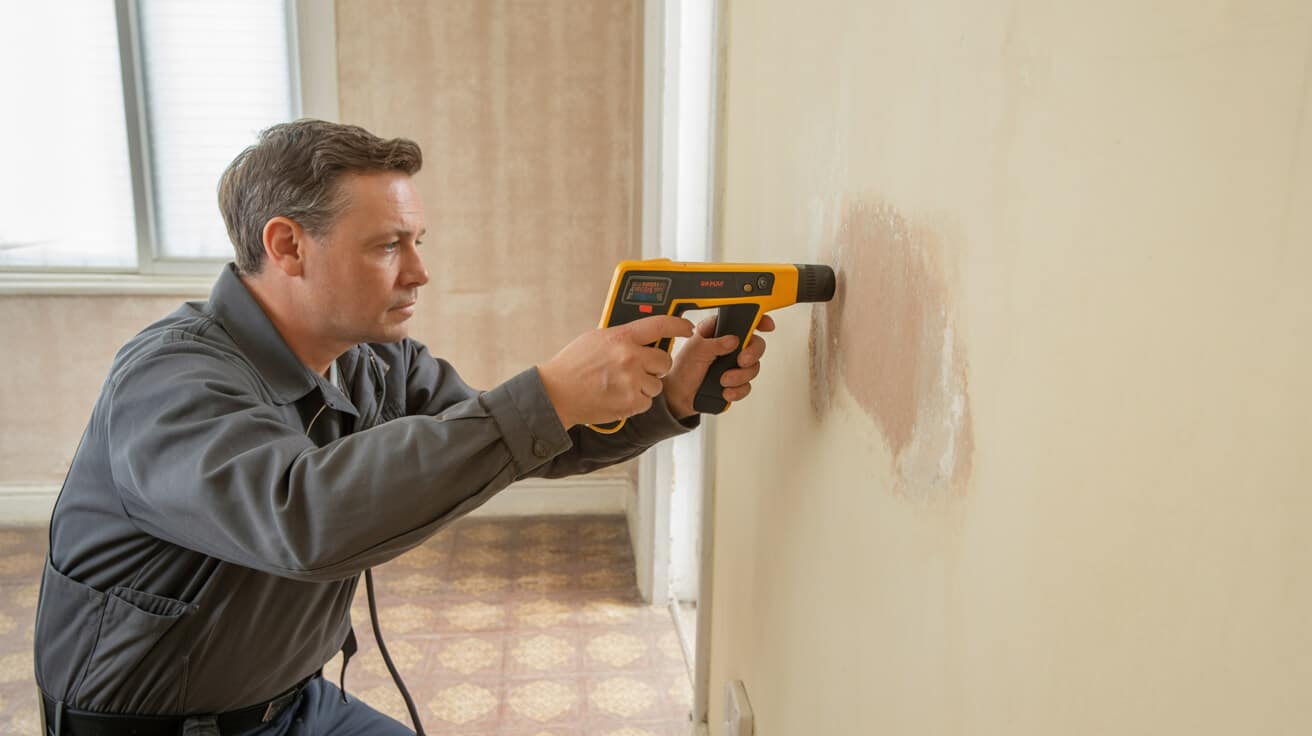
Compliance is feasible for every building—old or new—if you match upgrades to both Part F requirements and your property’s unique needs. Retrofitting every vent may not be necessary, but “ventilation by hope” is no longer allowed. Modern compliance is built on upgrades that earn you documented results, not just boxes ticked on an installer’s invoice.
“Installing a fan doesn’t guarantee compliance—evidence of performance, test results, and clear reporting matter most.”
Upgrade Options for True Compliance
Trickle Vents
- Retrofit into uPVC, timber, or aluminium frames
- Adjustable models allow year-round control
- Provide background airflow that doesn’t rely on a window being open
Air Bricks/Passive Vents
- Ideal for heritage properties or where conservation matters
- Discreet wall kits preserve historic features while maintaining compliance
Passive Stack Systems
- Leverage the laws of physics—warm air rises, driving fresh airflow without electricity
- Useful in larger, multi-storey, or especially airtight homes
Picking Mechanical Extraction Wisely
- Choose humidistat-activated or timed fans in bathrooms and kitchens
- Always exhaust directly outdoors—no venting to lofts or voids
- MVHR (Mechanical Ventilation with Heat Recovery) is the gold-standard in full refurbs or new-builds: these systems recover energy and ensure year-round compliance
Key: Whatever you instal, require a post-fit test, clear certification, and visible airflow data for your records. Remember, compliance is judged on measured performance, not presumed adequacy.
Who Holds Legal Responsibility for Part F, and What Are the Practical Risks of Ignoring It?
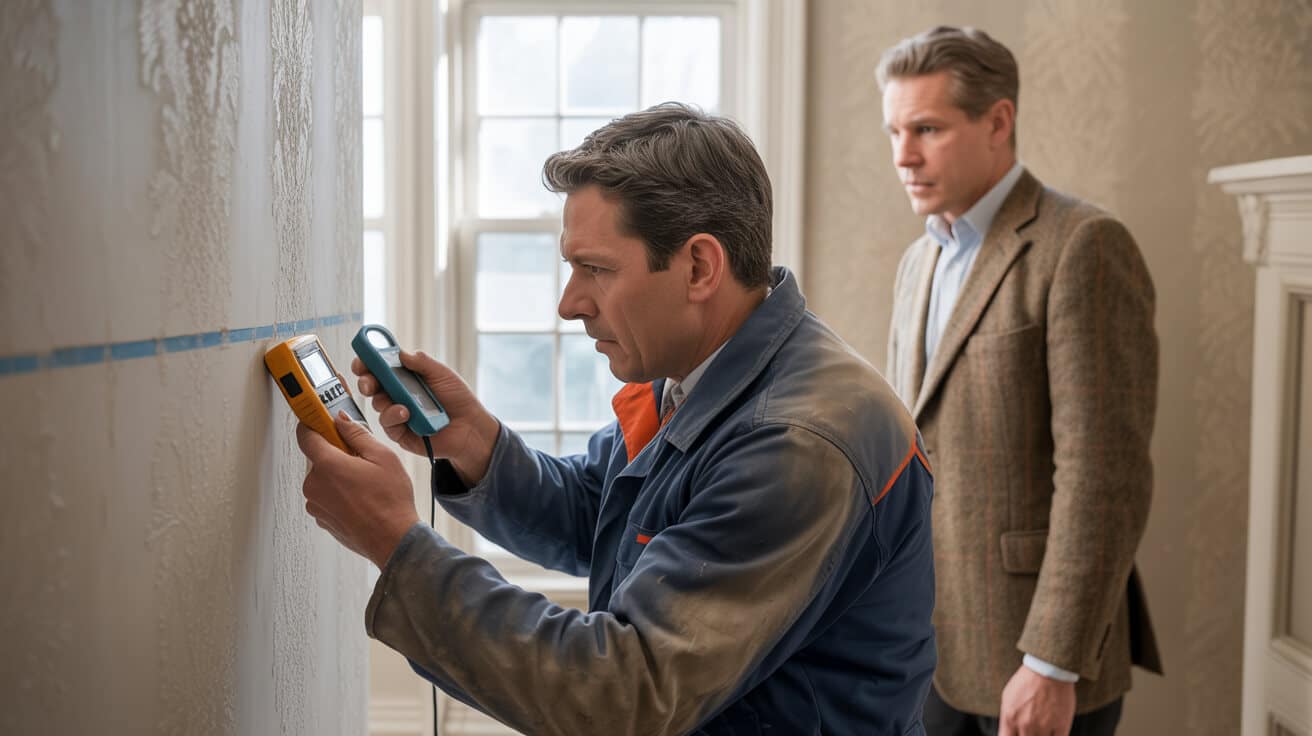
For every stakeholder—from portfolio landlord to first-time buyer—the onus to comply rests squarely with the property owner. This responsibility encompasses specification, commissioning, ongoing maintenance, and crucially, keeping proof ready for when authorities, insurers, or new buyers come calling.
“The Housing Health and Safety Rating System classifies inadequate ventilation as a Category 1 hazard, akin to severe damp or fire risk.”
Responsibilities By Role
- Landlords: Must provide, test, and maintain compliant ventilation. If systems fail, liability flows upward—tenants are only required to use provided solutions, not fix them.
- Homeowners: If you sell, surveyors and buyers’ agents may flag non-compliant airflow, stalling sales or reducing value.
- Portfolio managers: Silent non-compliance across units can multiply liability and cost across your book.
Practical Risks of Non-Compliance
- Legal Action: Local council can issue improvement notices or fines, and may force remedial works—fast.
- Insurance Gaps: Many property policies now cite non-compliance as grounds for payout refusal in damp or damage cases.
- Valuation Hits: Surveyors down-rate properties with damp, poor ventilation, or suspect compliance—costing owners far more than regular testing ever would
A modest sum spent today—on test, documentation, and upgrade—prevents massive losses, stress, and disputes in the future.
What Does It Actually Cost to Reach Full Compliance—and Is Professional Support Worth It?
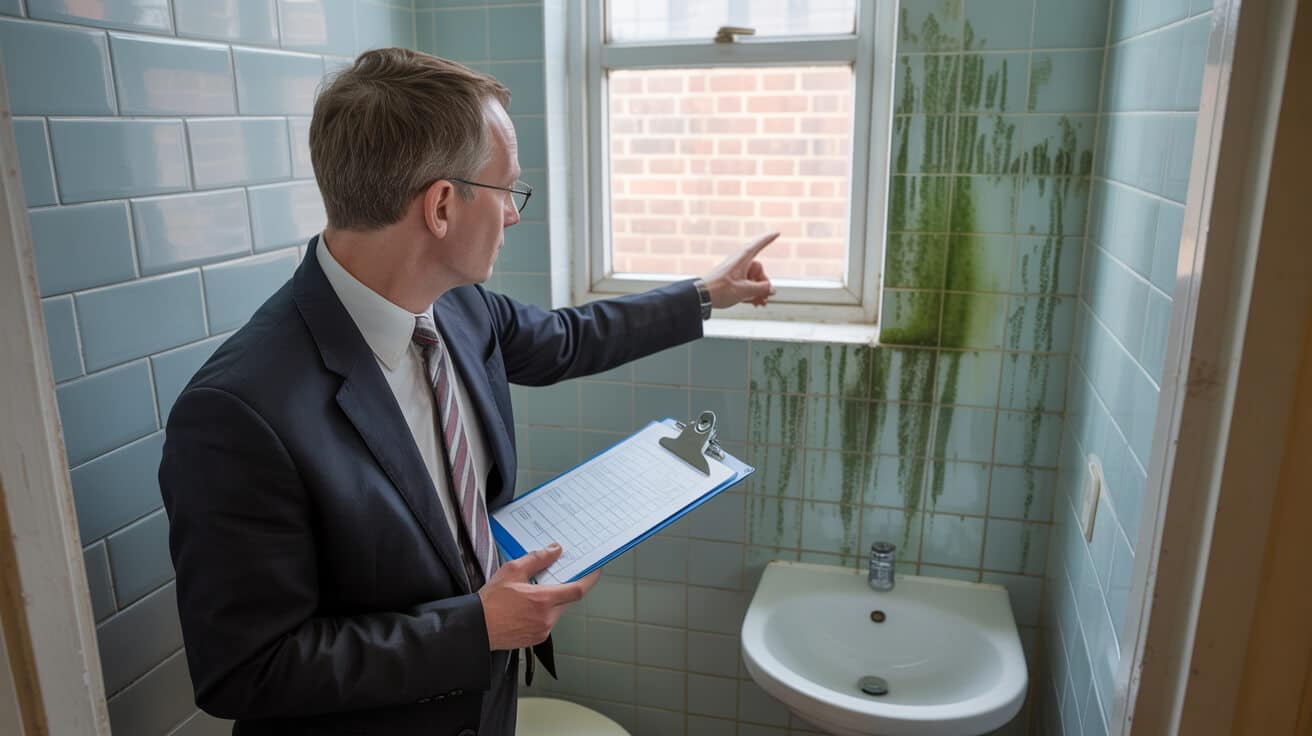
Most property owners are surprised at how affordable professional ventilation upgrades and compliance testing now are—especially compared to the cost and hassle of post-damp repairs, legal disputes, or a failed sale. In practice, compliance costs are predictable, with bundled services offering convenience and future savings.
| Upgrade Type | Typical Cost (£) | What’s Included |
|---|---|---|
| Trickle vent/window | £50–£90 | Hardware + installation |
| Extraction fan | £160–£350 | Supply, fitting, certs |
| MVHR full system | £2,100–£4,500 | Design, instal, test |
| Airflow survey | £90–£180 | Test, report, certificate |
| Compliance audit | £120–£250 | Site assessment, documentation |
(Source: All Services 4U, UK Property Maintenance Survey, 2023)
Request itemised, fully-certified quotes rather than the lowest number on a page. Ask how testing, reporting, and ongoing support are delivered. Remember: a small investment up front can save thousands, years of stress, and even legal enforcement.
Choosing Reliable Providers
Select firms with:
- Recognised trade credentials (NICEIC, BPEC, HETAS)
- Track record working with your property type, especially if period or complex
- Explicit commissioning, test, and documentation process
All Services 4U offers all-in-one project coordination—audit, improvement, certification, and future servicing in a single seamless workflow.
“Certification isn’t bureaucracy—it’s proof. It stands between you and avoidable loss, whether from legal, insurance, or reputational hits.”
Is DIY Ventilation Work Sensible, or Should You Always Use a Qualified Technician?
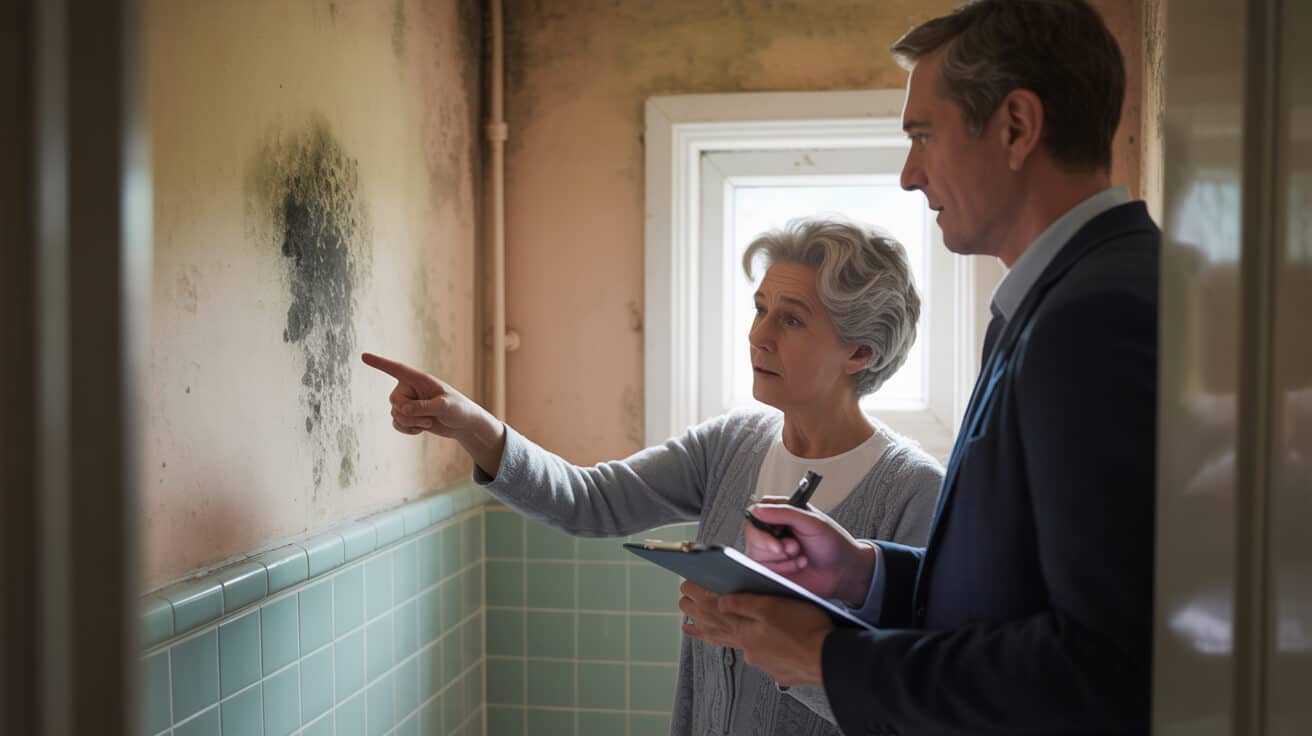
Not every task needs a professional—safe DIY maintenance includes opening, cleaning, or unblocking vents, and basic regular checks. However, the boundaries on what you can (or should) attempt without proper training are now clearer than ever.
“You can clear a vent or change a philtre yourself. But wiring, air testing, or compliance calls for qualified hands.”
DIY: What’s Safe—And When to Get Expert Help
- You can: Remove dust or blockages, clean vent grilles, adjust trickle settings, lubricate fan moving parts
- You must not: Wire or replace fans, alter extractor routes, perform airflow measurement or issue compliance paperwork
Landlords and vendors: instruct tenants (or DIYers) but never delegate legal compliance—professional test and sign-off is non-negotiable.
Bringing in the Experts
Always use a pro for:
- Post-upgrade / pre-letting compliance certification
- Installing or replacing extraction fans and ductwork
- Any works involving electrics, system documentation, or legal sign-off
- Addressing persistent, unresolved damp, odours, or health complaints
Scrimping here leads to greater exposure—for safety, value, and compliance, expert support is the best line of defence.
What Should All Services 4U Actually Deliver in a Full Ventilation Compliance Visit?
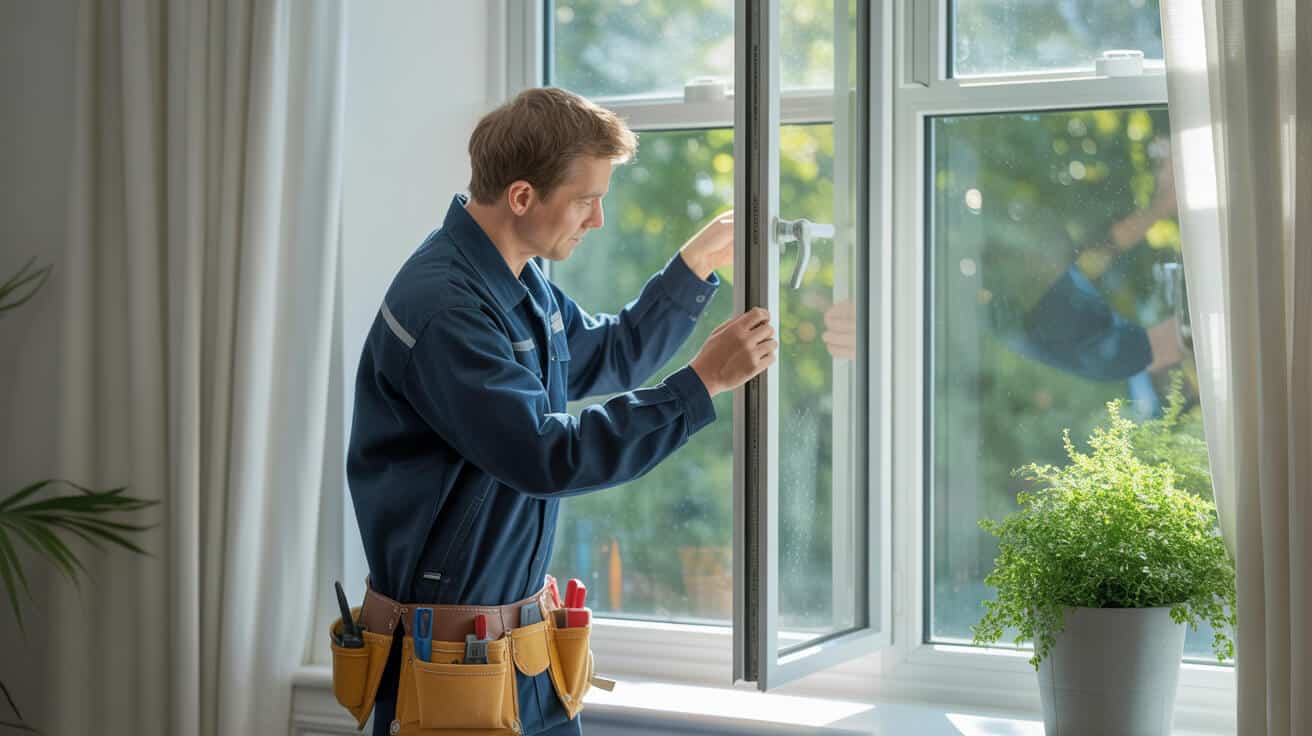
A professional property audit is not a generic walk-through—it’s a forensic check combined with a resilience-boosting plan. Here’s what an all-in-one ventilation compliance service should deliver:
- Room-by-room visual and functional checklist:
- Certified airflow testing: Anemometer readings, before and after upgrades
- System mapping and photographic evidence: Each extractor, vent, and passive stack documented
- Root-cause diagnostics: Pinpointing blockages, failed installations, or systemic risk
- Actionable solutions: Prioritised upgrades, tailored to building age and use
- Legal-ready reporting: Certificates for every installation, plus a maintenance guide for future compliance
All documentation is customer-owned and designed to stand up to council, insurer, buyer, or letting agent scrutiny. With one reputable project partner, you transform compliance from a liability into a value-adding asset.
“Certified ventilation isn’t made complex for its own sake—it’s made robust to protect you and your asset in a changing world.”
Protect Your Property and Your Reputation—Choose All Services 4U for Ventilation Compliance
Unseen damp and “invisible” compliance gaps quietly attack asset value, rental returns, and wellbeing for every stakeholder. All Services 4U combines expert, multi-trade practical know-how with watertight documentation and responsive, honest service. Whether you own a city rental or manage a complex portfolio, we keep your property’s ventilation—and its value—future-proof, protected, and in full legal standing.
Book your professional ventilation audit with All Services 4U today to guarantee compliance, peace of mind, and the long-term integrity your property deserves.
Frequently Asked Questions
What makes modern Part F ventilation compliance fundamentally different, and how does it reshape the risks and rewards for your property?
Part F now demands that you prove—rather than just claim—your property’s ventilation works as intended, with quantifiable airflow evidence and digital logs underpinning every handover, sale, or audit. Gone are the days of installing a fan and hoping for the best; today, airtight energy-efficient properties trap moisture and airborne pollutants unless every room achieves verified air change targets. If your records or airflow rates fall short, value, tenant health, and legal standing suffer in ways that weren’t even measured five years ago.
Satisfying these requirements is about more than ticking standards boxes: it means safeguarding your investment, reputation, and occupants’ wellbeing for years ahead. Properties with up-to-date airflow documentation average 20% fewer structural and damp-related repairs, and audit failure is now a primary reason for blocked sales or nullified insurance (RICS 2024).
Every signature on a logbook is one less unknown for your future self to sort out.
How is the compliance process enforced more strictly now?
- Airflow is measured room-by-room with calibrated devices before certificates are issued.
- Every commissioning event—new tenancy, major refurb, or upgrade—now demands fresh logs and signed test results.
- Local authorities and insurers demand granular proof, not just outdated certificates or visual checks.
- Councils in major UK cities require digital documentation and may withhold occupancy permits if gaps are found.
Why does evidence-based compliance drive market value?
- Proven logs are now factored into valuation and purchase negotiations.
- Rental properties lacking measured documentation face a growing risk of enforcement visits and insurance exclusions.
- Owners with historical records and recent airflow test data see increased buyer confidence, resulting in stronger offers and rapid transactions.
All Services 4U closes the gap by providing end-to-end surveys, record creation, and proactive alerts—transforming ventilation compliance from a liability into a genuine asset.
How do you reliably document Part F ventilation compliance and prevent invisible failures from derailing a future audit?
Genuine compliance requires matching each vent and extractor to measured airflow rates using calibrated testing, then linking those results to a documented logbook—covering every habitable room and wet space, both visually and by airflow. Without this, over a third of properties fail surprise re-assessment within 18 months (BESA 2024)—often for issues like sealed grilles, clogged ducting, or fans underperforming out of sight.
A pass today is no guarantee tomorrow: ongoing diligence matters more than ever.
What steps seal the compliance chain for property owners?
- Complete room-by-room inspection, pinpointing blockages or bypasses even in rarely used spaces.
- Air velocity and extraction tests, with minimum rates logged: 13+ l/s in bathrooms, 30+ l/s for kitchens.
- Digital logs and signed-off certificates for each material event: new tenancy, major refit, system upgrade.
- Historical service and cleaning records to prove there’s no gap or “forgotten” equipment.
The paperwork you organise today is what keeps tenants safe and deals flowing tomorrow.
Which records must you retain and update?
- Installation and commissioning forms for any work on the ventilation system.
- Logbooks showing every airflow test, retest, or remedial intervention.
- Drawings or digital plans mapping airflow coverage and terminal points.
- Service contracts or periodical maintenance records to satisfy letting agencies and surveyors.
Overlooking a single stage can invalidate an entire compliance portfolio. All Services 4U keeps every document connected, current, and accessible—so property health and asset value never hinge on missing paperwork.
What hidden warnings indicate ventilation is quietly failing—often before any visible damp or decay?
Most early signals of poor ventilation show up as persistent, low-level discomfort: stubborn condensation, musty air after showers or cooking, or that “heavy” feeling in bedrooms no matter how often you open the window. UK building science reports show pollutant and moisture spikes begin well before ceiling stains or mould patches surface (UKBSR 2023)—by the time you notice black spots, silent deterioration of woodwork or plaster could already be underway.
The earliest clues aren’t spots or smells—it’s waking up still tired, or windows refusing to ever dry out.
Which seemingly minor clues warrant a fast assessment?
- Laundry that never seems to dry indoors and feels “damp” hours later.
- Light swelling or new micro-cracks appearing at window edges or external walls.
- Recurring headaches, sneezing, or mild coughs—especially among young or older tenants.
- A room that still feels stuffy even after airing out or deep cleaning.
How do professionals pinpoint source—ventilation or another underlying problem?
- Damp stains after heavy rain or near plumbing usually indicate water ingress or leaks.
- Persistently “cold” corners, slow-drying surfaces without obvious leaks, or odours signal airflow failing somewhere in the chain.
Professional airflow testing identifies not just the presence of ventilation, but its adequacy and performance—helping fix the cause, not just the symptom. All Services 4U issues actionable findings, documented for both regulatory and practical peace of mind.
What upgrades ensure airtight Part F compliance—and how do you avoid “trap” solutions that leave you exposed?
Not all upgrades close the compliance gap. Many “fan swaps” or over-the-counter kits fail on measured airflow, leave commissioning forms unsigned, or flout special regulations for HMOs and listed buildings. The real solution is tailored: correct hardware sized for the space, followed by on-the-day calibrated airflow measurements, with each step signed off by a competent person.
Retrofitting may involve trickle vents for passive flow, humidity-sensing or PIR-activated fans for moisture-prone rooms, or even MVHR for large modern buildings. Eco-minded upgrades count only if logging and certifications prove their worth.
Installation gets you started—but only measured performance and documented signoff gets you over the finish line.
How should you approach upgrades for different asset types?
- Period homes: Prefer low-profile, retrofittable options like trickle vents and passive stacks—sensitive to building fabric.
- Modern blocks: Humidity- or presence-controlled fans in all wet rooms, vented externally and documented by commissioning engineers.
- High-value refurbs: MVHR systems for top efficiency, with every duct run validated and each room retested before handover.
What are the most common upgrade mistakes?
- Missing final test or incomplete certificates post-fit.
- Applying a “one size fits all” solution without specialist sign-off.
- Overlooking documentation for hidden or hard-to-access rooms.
All Services 4U guarantees every upgrade is matched to property specifics, tested, and checked into the digital log—removing guesswork and future challenge risks.
What are the legal and financial stakes if your property falls short of Part F standards, and how can you stay a step ahead?
Legal liability always sits with the property owner—regardless of whether tenants misuse equipment or previous works were documented. Local councils are doubling down on enforcement: action notices for ventilation failures have surged 32% in the past year (Gov.uk Enforcement Tracker 2023), and insurance claims related to undiagnosed ventilation gaps are at record levels.
One missing signature can be the difference between easy renewal and a portfolio under enforcement review.
Where do most compliance lapses become costly?
- “Partial” upgrades leave legacy fans or vents untested—risking split compliance.
- Expired or missing logs at tenancy/sale transfer, invalidating the compliance trail.
- Reliance on old certificates, insufficient for current standards or council assessment.
What does real-world enforcement involve?
- Councils issuing improvement notices with 7–30 day deadlines for documented remedies.
- Insurers investigating claims and denying payout for damage linked to non-certified ventilation.
- Agents, buyers, or tenants raising compliance queries that halt sales or trigger forced repairs.
A proactive compliance partner like All Services 4U closes documentation gaps ahead of deadlines, maintains your digital records, and gives you a compliance-forward asset—turning risk into opportunity for every property you own.
Which ventilation system tasks are safe to DIY, and when does law require a certified Part F specialist?
Simple maintenance like cleaning vents and visible grilles, checking for dust, and changing basic philtres can be handled in-house—just follow manufacturer instructions and ensure all grilles or vents are accessible. However, any system installation, new wiring, operational testing for compliance, or flow rate commissioning must be done by certified professionals under UK Building Regulations. Attempting “DIY” airflow certificates or bathroom/kitchen wiring not only voids insurance, but can stall sales or trigger enforcement.
DIY keeps things ticking, but only certified evidence keeps your investment secure when scrutiny arrives.
Where’s the safe legal line for owner or landlord actions?
- You can: Clean, remove dust from grilles, change philtres, check visible vent operation.
- You must call a specialist for: System installation, electrical work in wet zones, official airflow testing, logbook updates, or any required documentation for transactions.
How does expert support reinforce safety and compliance?
- Professionals ensure legal signoff, commissioning logs, and digital records tie every room and system to a compliance trail.
- Fast response for repairs, performance tuning, or one-off certifications.
- Scheduled reminders for periodic renewal, avoiding “outdated certificate” headaches.
All Services 4U’s team blends user-friendly guidance with certified compliance, so you always know where your legal responsibilities end and your asset’s security begins. Book a compliance health check to future-proof every audit and tenancy.



